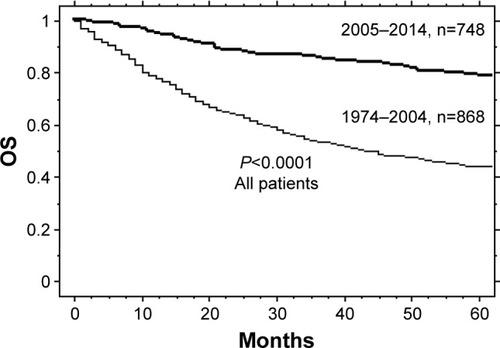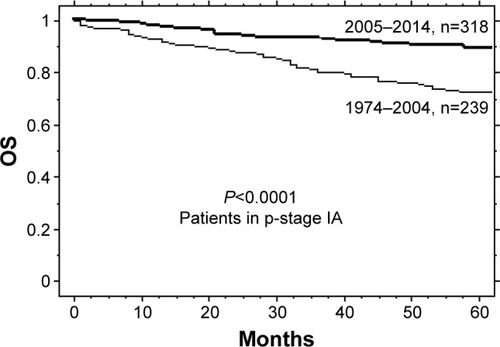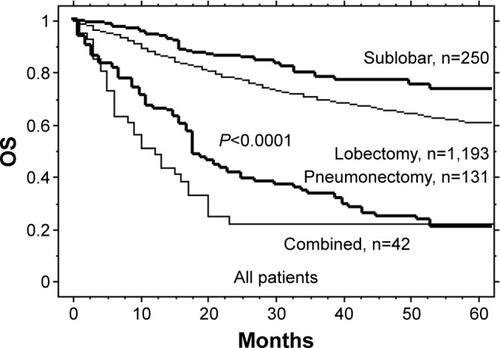Figures & data
Table 1 Chronological changes in various clinicopathological factors in the resected patients with lung cancer
Table 2 Chronological changes in surgery for lung cancer
Figure 1 OS curves of all patients who underwent resection for lung cancer show a significant survival difference between patients from 1974 to 2004 (n=868) and those from 2005 to 2014 (n=748; log-rank test, P<0.0001).

Figure 2 OS curves of p-stage IA patients who underwent resection for lung cancer show a significant survival difference between patients from 1974 to 2004 (n=239) and those from 2005 to 2014 (n=318; log-rank test, P<0.0001).

Figure 3 OS curves of patients are significantly different among four surgical methods including sublobar resection (wedge resection or segmentectomy), lobectomy (including bilobectomy), pneumonectomy, and combined resection with adjacent organs (log-rank test, P<0.0001).

